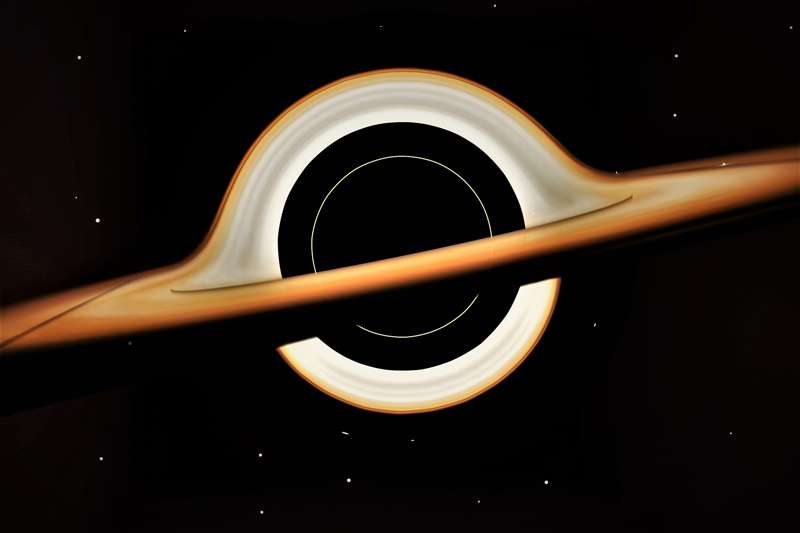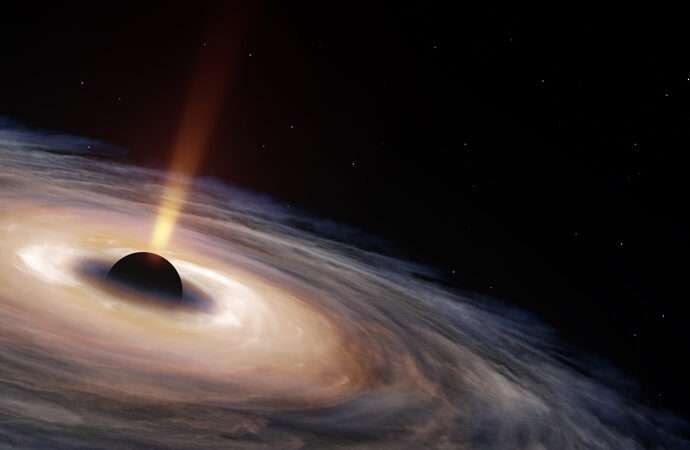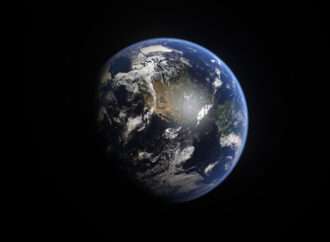Black holes are one of the most mysterious and captivating phenomena in the universe. These cosmic enigmas have fascinated astronomers, physicists, and science enthusiasts for decades. Despite their intriguing nature, many misconceptions and myths surround black holes. In this article, we’ll delve into the intriguing world of black holes and explore 15 fun and enlightening
Black holes are one of the most mysterious and captivating phenomena in the universe. These cosmic enigmas have fascinated astronomers, physicists, and science enthusiasts for decades. Despite their intriguing nature, many misconceptions and myths surround black holes. In this article, we’ll delve into the intriguing world of black holes and explore 15 fun and enlightening facts that will expand your understanding of these enigmatic celestial objects.
What Exactly Is a Black Hole?
To understand black holes, it’s crucial to grasp what they are. At its core, a black hole is a region of space where the gravitational pull is so incredibly strong that nothing, not even light, can escape from it. This phenomenon occurs when a massive star exhausts its nuclear fuel and undergoes a catastrophic collapse, resulting in a dense core known as a singularity surrounded by an event horizon.
Who discovered black holes?
The concept of black holes and the understanding of their theoretical existence developed over time, involving contributions from multiple scientists. It wasn’t a single discovery by a single individual. Here are some key milestones and the scientists associated with them in the history of black hole theory:
1. John Michell (1783): John Michell, an English clergyman and scientist, is often credited with being one of the first individuals to propose the existence of objects with gravitational forces. He referred to these hypothetical objects as “dark stars.” However, his work was largely theoretical and did not use the term “black hole.”
2. Pierre-Simon Laplace (1796): The French mathematician and physicist Pierre-Simon Laplace also explored the idea of massive objects with strong gravitational forces that could trap light. He made contributions to the understanding of what we now call black holes.
3. Albert Einstein (1915): Albert Einstein’s theory of general relativity, published in 1915, revolutionized our understanding of gravity. While Einstein’s equations did not specifically predict black holes, they provided the theoretical framework for their existence. General relativity predicted that extremely massive objects could create gravitational singularities, regions of infinite density where space and time become infinitely curved. These singularities would become a key element in the concept of black holes.
4. Karl Schwarzschild (1916): The German physicist Karl Schwarzschild was the first to find a solution to Einstein’s field equations that described a non-rotating, spherically symmetric black hole. The Schwarzschild metric outlined the properties of such a black hole, including the event horizon and singularity at the center.
5. Subrahmanyan Chandrasekhar (1931): The Indian astrophysicist Subrahmanyan Chandrasekhar made significant contributions to our understanding of the evolution of massive stars. His work showed that when a star’s core mass exceeds a certain limit, now known as the Chandrasekhar limit, it would inevitably collapse into a dense object, potentially a black hole. This work was instrumental in explaining the formation of black holes from massive stars.
6. Robert Oppenheimer and George Volkoff (1939): These two American physicists used Chandrasekhar’s work on the collapse of massive stars to study the formation of neutron stars and black holes. Their research laid the groundwork for understanding the end stages of massive star evolution.
It’s important to note that the term “black hole” itself was coined later, in the 1960s, by physicist John Archibald Wheeler. Wheeler played a significant role in popularizing the concept and terminology of black holes in the scientific community and the public.
In summary, the understanding and discovery of black holes involved the contributions of several scientists over centuries, with key insights coming from Einstein’s theory of general relativity and subsequent research in astrophysics and theoretical physics.
How is a black hole formed?
Black hole formation is a complex process that primarily involves the gravitational collapse of massive stars. Here’s a step-by-step explanation of black hole formation:

1. Massive Star Birth: The process of black hole formation begins with the birth of a massive star. Massive stars, those with many times the mass of our Sun (typically around 20 times or more massive), have a greater gravitational pull due to their larger mass.
2. Nuclear Fusion: Throughout its life, a massive star undergoes nuclear fusion in its core, where hydrogen atoms combine to form helium, releasing an enormous amount of energy in the form of light and heat. This energy counteracts the gravitational pull trying to collapse the star.
3. Exhaustion of Nuclear Fuel: Over millions of years, a massive star consumes its nuclear fuel. Once it exhausts its hydrogen fuel in the core, it starts to fuse heavier elements like helium, carbon, and oxygen. This process continues in layers until it reaches iron, which is a dead end for nuclear fusion. Unlike other elements, fusion of iron does not release energy but absorbs it.
4. Iron Core Collapse: When the star’s core becomes predominantly iron, there is no longer a source of outward pressure from nuclear fusion. The core can no longer support the immense gravitational forces trying to compress it. As a result, the core rapidly collapses in a matter of seconds under the force of gravity.
5. Supernova Explosion: The sudden collapse of the iron core triggers a cataclysmic event known as a supernova explosion. The outer layers of the massive star are expelled violently into space, releasing an incredible amount of energy and radiation. For a brief period, the supernova can outshine an entire galaxy.
6. Formation of the Remnant: What remains after the supernova explosion depends on the mass of the collapsing core:
A. If the core mass is less than about three times the mass of the Sun, it becomes a dense remnant known as a neutron star, composed mostly of neutrons.
B. If the core mass exceeds about three solar masses, it continues collapsing beyond the neutron star stage, and nothing can stop this collapse due to the overwhelming gravitational forces. The core becomes so dense that it forms a singularity at its center—a point of infinite density. This singularity is surrounded by an event horizon, which defines the boundary of the black hole.
7. Black Hole Formation: The remnant with a singularity at its core and an event horizon is what we recognize as a black hole. The event horizon is the boundary beyond which nothing, not even light, can escape the black hole’s gravitational pull. Any matter or radiation that crosses this boundary is trapped and can never return.
How Many Black Holes Are There?
It is challenging to provide an exact count of how many black holes exist in the universe because black holes are not directly observable in the traditional sense.
Here are some key points to consider when discussing the number of black holes:
1. Stellar-Mass Black Holes: These are the most common type of black holes, formed from the remnants of massive stars. Estimates suggest that there may be millions to billions of stellar-mass black holes in our Milky Way galaxy alone. Extrapolating this to the billions of galaxies in the observable universe, there could be an incredibly large number of stellar-mass black holes.
2. Intermediate and Supermassive Black Holes: Intermediate-mass black holes and supermassive black holes are found at the centers of galaxies. They are less common but still numerous on cosmic scales. There are thought to be millions or even billions of supermassive black holes in the observable universe.
3. Primordial Black Holes: The existence of primordial black holes, which could have formed shortly after the Big Bang, is a topic of ongoing research and debate. If they exist, they could contribute to the population of black holes.
4. Black Hole Mergers: Black holes can merge when two of them come together. The gravitational wave observations made by detectors like LIGO and Virgo have provided evidence of such mergers. These events add to our understanding of the black hole population.
5. Unobserved Black Holes: There are likely many black holes that have not yet been detected because they are isolated in space and not actively consuming nearby matter, making them difficult to observe.
15 Fun Facts About a Black Hole
1. Invisible Voids: Black holes are completely invisible to the naked eye, as they don’t emit or reflect any light. They can only be detected through their gravitational effects on surrounding matter.
2. Gravity Powerhouses: Black holes have an incredibly strong gravitational pull due to their immense mass, making them some of the most powerful gravitational objects in the universe.
3. Singularity: At the heart of a black hole lies the singularity. It’s a point where all the mass is concentrated into an infinitely small, dense region.
4. Event Horizon: The boundary surrounding a black hole, known as the event horizon, is the point of no return. Once an object crosses this boundary, it is trapped by the black hole’s gravity and cannot escape.
5. Different Sizes: Black holes come in various sizes. Stellar-mass black holes are formed from the remnants of massive stars and are relatively small, while supermassive black holes, found at the centers of galaxies, can be billions of times more massive than our Sun.
6. Spaghettification: As an object gets closer to a black hole, the tidal forces become extreme, causing it to be stretched and elongated in a process known as spaghettification. It’s not a pleasant fate!
7. Time Dilation: Near a black hole, time runs slower than it does in regions of weaker gravity. This phenomenon, predicted by Einstein’s theory of relativity, means that time passes differently for an observer near a black hole compared to someone farther away.
8. Hawking Radiation: Theoretical physicist Stephen Hawking proposed that black holes aren’t entirely black. They emit a faint form of radiation, now known as Hawking radiation, due to quantum effects near the event horizon.
9. Black Hole Names: Black holes, often named after the scientists who made significant contributions to our understanding of them. For example, the first black hole ever discovered is called Cygnus X-1.
10. Cosmic Cannibals: Black holes can “eat” nearby matter by pulling it into an accretion disk, a swirling disk of gas and dust that spirals into the black hole. This process can release enormous amounts of energy in the form of X-rays.
11. Black Hole Mergers: When two black holes come close to each other, they can merge into a larger black hole. This merger releases powerful gravitational waves, which were detected for the first time in 2015.
12. Time Travel Hypotheses: Some theories suggest that if you could survive the extreme conditions near a black hole’s event horizon, you might experience time dilation effects that could potentially be used for time travel to the future.
13. Black Hole Artifacts: Black holes can bend and distort the light from objects behind them, creating a phenomenon called gravitational lensing. This effect used to discover distant galaxies and stars.
14 . No Escape for Light: Even light, the fastest thing in the universe, cannot escape a black hole’s gravitational pull once it crosses the event horizon. This fact is what makes black holes so enigmatic.
15. Galactic Architects: Supermassive black holes play a crucial role in the formation and evolution of galaxies. Their gravitational influence can affect the movement of stars and gas within a galaxy, shaping its structure.
Conclusion
Black holes are among the most captivating and mysterious entities in the cosmos. From their birth during the catastrophic death of massive stars to their potential role in the distant future of the universe, black holes continue to pique the curiosity of scientists and the public alike. By exploring these 15 fun facts about black holes, we’ve journeyed into the heart of one of the universe’s most enigmatic phenomena, shedding light on the many facets of these cosmic wonders that continue to baffle and amaze us.




























Leave a Comment
Your email address will not be published. Required fields are marked with *